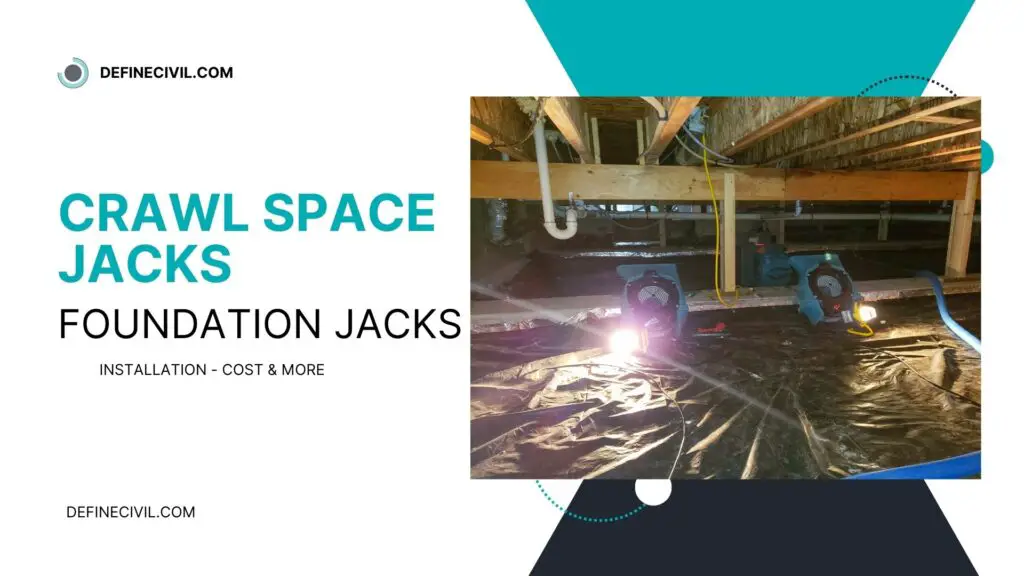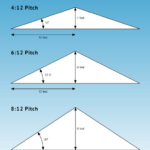If you’re dealing with bouncy or sagging floors, crawlspace jacks also known as foundation jacks or smart jacks are the perfect solution. They’re easily available in different sizes and heights for jacking up floor joists along crawl space.
Whether you have a squeaky floor or collapsing joists, you crawl space floor system might be compromised. That’s why we always recommend relying on a sturdy support system to have stable home. But don’t worry! you still have time to utilize right type of foundation support system.
Foundation support jacks can do wonders in terms of keeping the floor level. These steel piers can provide additional support and are typically made of steel, wood, concrete, or a combination of these.
I’ve explained in other posts about the push piers and helical piers as their role in Ottawa foundation repair industry; but this technique works best in raised foundation as well as post and pad foundation. So, if you have a crawl space, you can surely use this technique to lift significant amount of weight and avoid any sagging in the floor.
A typical steel crawl space support pier, you’ve got screw adjustment along with thrust bearing to adjust the heights and act as under house supports. Sometimes, mere providing the crawl space support or floor support jacks doesn’t work at all. That’s the case where you can think about adding support beam in crawl space.
The floor support beam will help raise floor joist and combine with a jack, the arrangement will give you a long-term solution against sagging or girder problems.
Why we need crawl space support jacks?
Many of you might have heard the word ‘raised foundation’. As the name suggests, a raised foundation is the one in which the main floor of a house is elevated with respect to surrounding earth. Concrete blocks or masonry units are typically used to raise the foundation above the ground level.
Having learned the concept of raised foundation, you will now get know about crawlspace jacks. As the elevated foundation creates crawlspace between the ground below and the girders/floor beams above, crawlspace jacks can be utilized to repair damage to such foundation.
Talking about ‘damage’, we are referring to squeaky, bowing, and sagging floors. This usually happens when the floor beams that support the floor above are compromised causing uneven floors. For such situations, crawlspace jacks are much stronger and better option than other repair techniques.
Also Read: Glulam Beam – Advantages – Applications – Table (With Examples)

Basics of typical crawl space structure
A floor joist system is the main support of your basement of crawl space. It provides the necessary underlying support for all the imposed loadings from flooring, furniture, and other things inside the house.
Now during construction, the builder supports the flooring by using horizontal beam in framing called floor joists. These floor framing joists helps stiffen the subfloor sheathing and act as a diaphragm. It is installed after the crawl space or basement has been built.
Components of Crawlspace Jacks
Crawlspace jacks consist of the following main parts:
Top Plate
It is the top most part of jack. It is in direct contact with the floor joists supporting the floor above. Plate is fixed to the girders using screws or nails. It attaches itself to the beams and supports them to transfer loads to the remaining parts of the jack.
Threaded Spindle Rod
This rod is encased in a steel pipe. Threading causes strong tightening action through rotational movement. This metal rod takes loads and transfers them to the bottom plate below. This rod in conjunction with top plate can be raised or lowered according to requirement.
Also Read: Bond beam in masonry walls – Design – Size – Foundation – Pros & Cons
Steel Pipe
This pipe houses the threaded metal rod. The size of the pipe is usually around 3-3.5 inches. It is the size of this pipe that determines the load capacity of jack. Pipes of this size are not going to buckle under different loading conditions.
Bottom Plate
Bottom plate has similar application as that of top plate. Primary difference is that it is fixed to a concrete post below. The whole jack ultimately rests on the concrete block through bottom plate.
Concrete Post
It is that part on which the jack rests. Through concrete post loads are ultimately transferred to the ground.
Also Read: 11 Differences between a Column and a Strut (MUST KNOW)
Key Features of a Crawlspace Jack
These jacks have a load carrying capacity of around 4 kips (40,000 lbs.) each. Usually a crew of three professional workers is enough to get the work done in two or three days.
Installation Process
Major steps involved in the installation of crawlspace jacks are listed below in a chronological order.
- The first step is preparation of workspace. Firstly, all the unnecessary objects are removed from the vicinity of workspace. Any detritus is wiped out from the floor beams and adjacent area. Minimum 3-4 ft. clearance is required to freely move the equipment and workforce.
- Next step is construction of concrete post. For that we first prepare pad base. Usually 1’x1′ excavations are dug with a depth of 1′. The base of this excavation is filled with gravel or lean concrete can also be used. This is done to ensure that loads are distributed over a wider area. It also ensures uniform distribution of loads.
- Posts used are typically precast. A clear distance of around 3-3.5″ is maintained between the post and the floor beam. After that all the parts of crawlspace jack are assembled and secured in place.
- Jacks are generally installed at 6′ intervals. One considerable point here is that it is best practice to position crawlspace jacks at major joints. This eliminates the chance of one girder being lifted above or below with respect to joining girder. If this happens, the result will be uneven floors. Therefore, it is incumbent to ensure uniform lift.
Also Read: SPC Vinyl Flooring – Difference with WPC flooring- Advantages – Cost
- In the end, lifting is done. One jack is slightly lifted at a time and this process continues with other jacks in the same manner. As discussed earlier, three professional are required to complete this job. During lifting, two workers are engaged in the raising process while a third worker is on the floor above monitoring floor levels.
Cost
The average cost that incurs on crawlspace jack installation is around $10k – $20k. However, sometimes additional work such as replacement of rotten beams, fixing of damage girders, requirement of additional support including use of helical or push piers, and other related issues can add to the cost of the project.
How to support floor joists in a crawl space?
I’ve found a lot of people are asking to me about “how to support floor joists in a crawl space”. Here’s how you do it:
- You can install additional beams beneath the already built floor joists. The best way is to make a supporting mid-span beam of 2×10 or 2×8 size perpendicular to the joists. This method will solve any of wobbling in your floor joists. Your joists will never move again.
- Try installing sister joists along the main damaged joist. Joist sistering is a pretty common technique used by foundation repair experts. You can add an extra identical floor joist and tie them together with screws or nails. This technique can easily resolve your problems of sagging floors.
- Another technique is using jack posts. That’s in fact the best of all techniques. The house leveling jacks are easily adjustable and so even if you again feel some settlement, you can fine tune the jacks for additional settlement.
- You can use concrete or brick columns (if they’re readily available). Anyhow, you need to attach a bracket at the top of the column to adjust it for future settlement.
How to level a crawl space floor?
A lot of homeowners are confused whether they need to level a crawlspace floor or not? Some suggests short term solutions like putting sand underneath the crawl space while others say not to level a crawlspace if there are no water intrusion issues.
Well, an uneven or squeaky floor is quite an annoyance. But these issues are frequent due to excess moisture, mold, rot, and cracks. So, it is best to opt a permanent and reliable solution i.e. the use of floor support jacks.
Well, a typical crawlspace floor jack comes with a screw adjustment and is made of heavy-duty galvanized material. You can quickly set it up under the sagging floor joist and re-level the floor without much hassle.

















